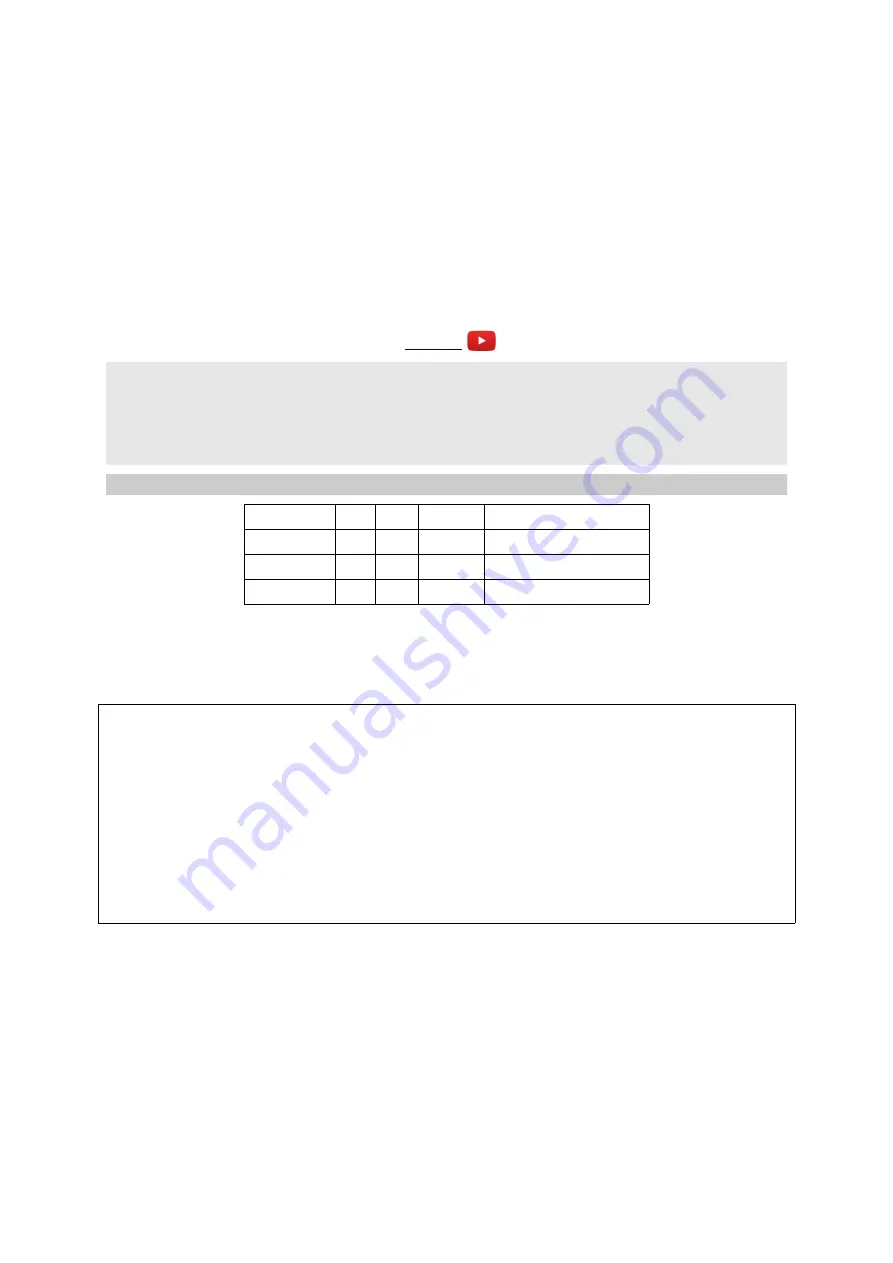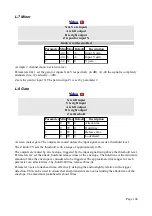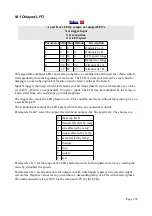
Parameter 4 sets an offset between the timing of the X & Y inputs (in sample frames). When using
Y as a trigger, it is often a good idea to delay it slightly relative to the pitch, to ensure that the pitch
has changed and settled before the trigger samples a new note.
The Z knob/CV controls the slew rate of output A. At the minimum value of Z, changes in A are
instantaneous. As Z increases, changes in A take place more slowly.
MIDI Output
: each new note (i.e. when the Output B trigger fires) is output as a MIDI note
message on the MIDI channel selected in the settings. The note value is that of the position in the
keyboard mapping of the current output.
K-6 Clockable SD Delay
X is signal
Y is clock input
Z is feedback
A = output according to mode
B = output according to mode
Tap tempo enabled
Parameter Min Max Default
Description
0
-15 8
0
Delay time multiplier.
1
0
8
8
Maximum feedback.
2
0
2
0
Output mode.
This algorithm is a delay/echo effect, where the delay time is set from a clock pulse. It is basically
the same as the Clockable Delay/Echo algorithm, except that whereas that algorithm uses the
module's RAM for storage, this one uses the SD card, meaning that the delay time can be much,
much longer – about 95 minutes. It also runs at the full sample rate, so the audio fidelity is higher.
SD card requirements
This algorithm is continually reading from and writing to the SD card. You will want a good
quality, high-speed card. A microSDHC card like that recommended above will work well.
The algorithm creates a file on the card called 'DELAY.BIN'. This is created in a very specific
way using low-level card access. Do not mess with the file, or attempt to copy it onto another
SD card for another disting to use. The disting must create the file itself. You can however copy
the file to your computer to process its contents, should you so wish.
It may be that the disting cannot create the file if the card is too fragmented, even if it says it
has enough free space. In this case, the easiest solution is to reformat the card.
Input X is the signal input. Any audio signal can be fed in here.
Input Y is the clock input. Any clock pulse in excess of 1V can be used. The time between rising
trigger edges is used to set the delay time. The minimum delay time that can be set is about 90ms.
The Z knob/CV controls the feedback, from zero to a maximum determined by parameter 1. At a
parameter value of 0, the maximum feedback is exactly 100%. At higher values, the maximum
feedback goes over 100%, up to 125% at a parameter value of 8.
Page 96










































